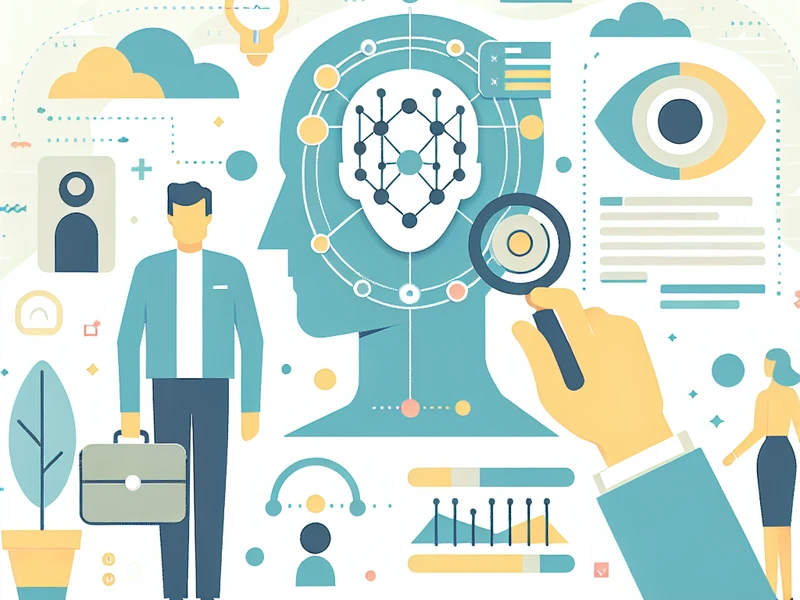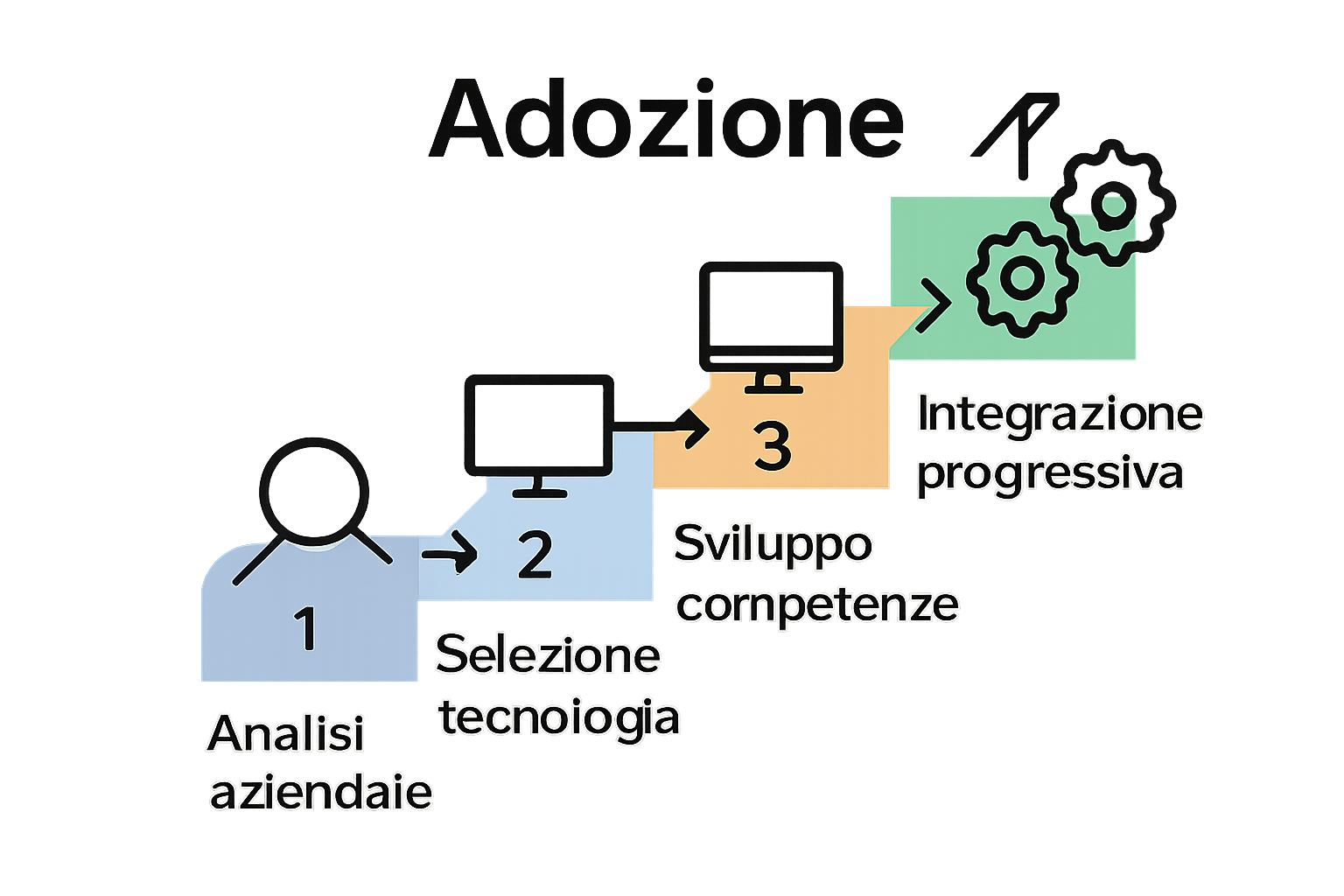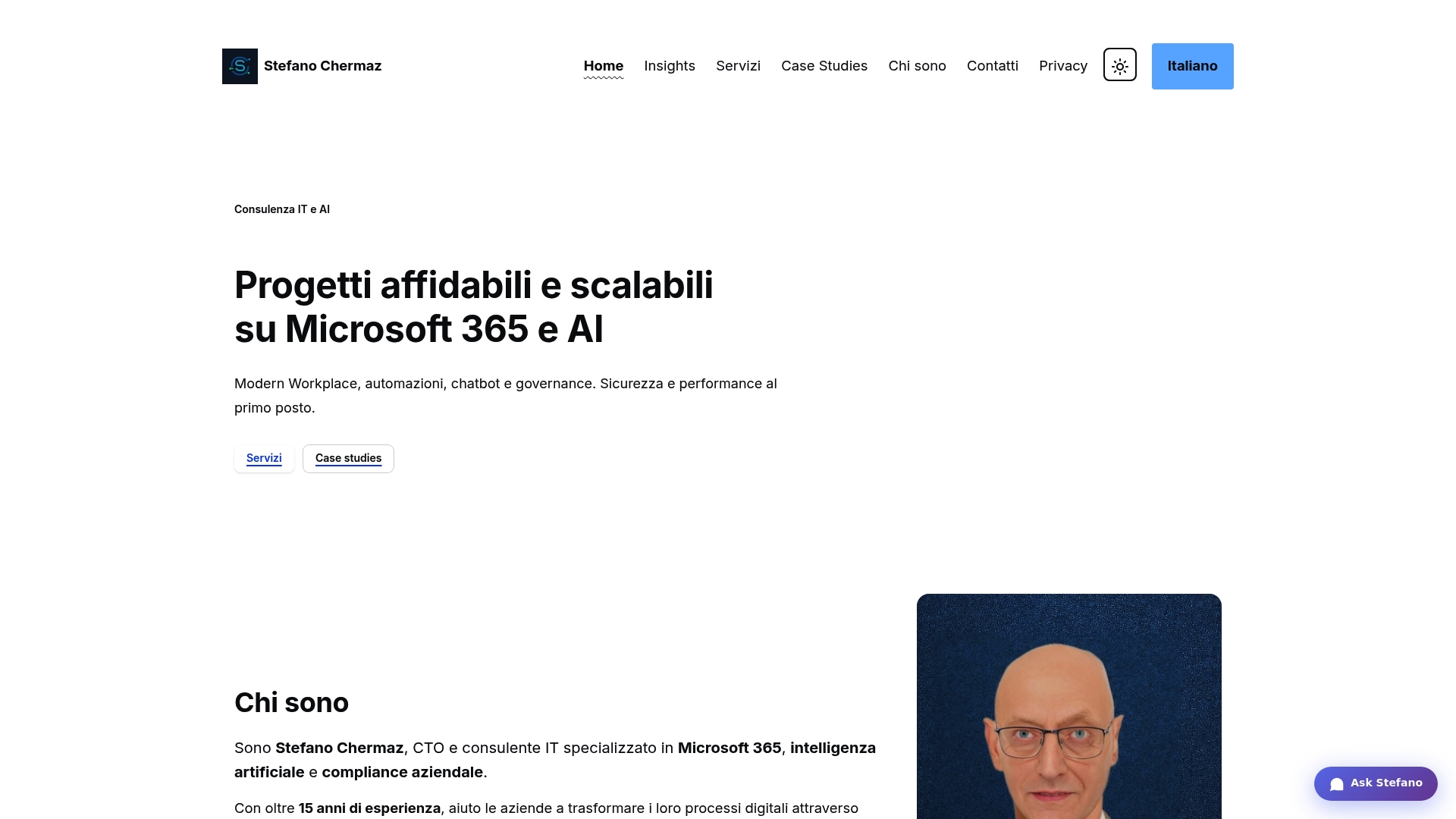Understanding the artificial intelligence adoption process


When we talk about artificial intelligence, a future full of robots and automation immediately comes to mind. Yet, among all the ideas about technology, it is surprising to discover that over 13% of businesses in the European Union have already integrated AI solutions into their processes. What no one expects is that the real change is not just technical. It involves corporate culture, strategies, and skills, transforming every phase of work into something completely new.
Index
- What does the AI adoption process mean?
- Why is AI adoption important for businesses?
- What are the main elements of the adoption process?
- How does the integration of AI into business processes work?
- What are the challenges and opportunities of AI adoption?
Riepilogo Veloce
Non è solo una questione tecnologica, ma implica un'evoluzione nei modelli organizzativi e culturali aziendali.
Prima di adottare l'IA, le aziende devono analizzare i propri processi e obiettivi per garantire l'allineamento alle necessità.
Sviluppare le competenze tecniche per gestire l'IA è essenziale per sfruttare appieno le sue potenzialità.
L'IA può migliorare l'efficienza operativa e personalizzare l'esperienza del cliente, creando così vantaggi rispetto ai concorrenti.
Occorre affrontare criticità legate alla privacy, all'occupazione e alla trasparenza per un'adozione responsabile dell'IA.
5 punti chiave identificati
What does the process of adopting artificial intelligence mean?
The process of adopting artificial intelligence represents a complex strategic journey through which organizations integrate artificial intelligence technologies into their systems and business processes. It is not merely about implementing a new technology, but rather a profound change that involves technological, organizational, and cultural aspects.
Definition and Strategic Context
The adoption of artificial intelligence goes beyond the installation of new software tools. It means rethinking operational models, developing new internal skills, and creating a technological ecosystem capable of continuously learning and adapting. According to the Agency for Digital Italy, this process requires a thorough strategic assessment that considers:
- Alignment with business objectives
- Ability to transform existing processes
- Necessary investments in infrastructure and training
- Potential impact on business models
Fundamental Components of the Process
An effective adoption process of artificial intelligence is structured through well-defined phases. It includes the preliminary analysis of business needs, the evaluation of available technologies, the design of customized solutions, and gradual implementation. It is not a sudden transformation, but a structured journey that requires:
- In-depth understanding of AI capabilities
- Identification of specific and measurable use cases
- Development of internal technical skills
- Management of organizational change
The ultimate goal is to create an intelligent technological infrastructure that not only supports current operations but also generates strategic value through machine learning and predictive analytics. A well-structured adoption process enables companies to transform data into strategic insights, optimize operational efficiency, and develop new business models based on artificial intelligence.
This table organizes the phases and key elements of the artificial intelligence adoption process as illustrated in the text.
Fasi del Processo di Adozione IA
Analisi delle esigenze, processi esistenti e definizione obiettivi
Selezione delle tecnologie e sviluppo delle infrastrutture
Formazione del personale e acquisizione di expertise IA
Identificazione casi d'uso specifici e personalizzazione IA
Adozione progressiva, monitoraggio e ottimizzazione continua
Supporto a cultura, comunicazione e organizzazione
6 punti chiave identificati
Perché l’adozione dell’intelligenza artificiale è importante per le aziende?
Artificial intelligence represents a technological revolution that offers companies extraordinary opportunities for growth, innovation, and competitiveness. It is no longer an optional choice, but a strategic necessity to remain relevant in an increasingly digital and dynamic market.
Competitive and Strategic Advantages
The adoption of artificial intelligence enables companies to gain significant competitive advantages. According to Eurostat, over 13% of businesses in the European Union have already implemented AI solutions, demonstrating a clear trend towards digital transformation. The main benefits include:
- Improvement of operational efficiency
- Cost reduction through automation
- Ability to make data-driven decisions
- Personalization of the customer experience
Innovation and Transformation of Business Processes
Artificial intelligence is not just a technological tool, but a true enabler of innovation. It allows companies to rethink their business models, optimize internal processes, and generate new growth opportunities. AI technologies enable predictive analytics, identification of new market trends, and the development of smarter, more personalized services.
The implementation of AI involves the ability to create a more agile, intelligent, and learning-oriented business ecosystem. It means transforming data into strategic assets, anticipating customer needs, and developing more innovative and competitive products and services.
What are the main elements of the adoption process?
The process of adopting artificial intelligence is a complex journey that requires a strategic vision and a systemic approach. It is not merely about implementing new technologies, but about building an organizational ecosystem capable of integrating artificial intelligence effectively and sustainably.
Initial Strategic Assessment
The initial phase of the adoption process requires a thorough strategic assessment that examines the actual business potentials and needs. The Hedlamp project highlights the importance of developing adaptable models that allow for flexible planning. The key elements of this preliminary phase include:
- Analysis of existing business processes
- Identification of areas for potential improvement
- Assessment of internal technical skills
- Definition of specific objectives for AI adoption

Technological Architecture and Skills
Building the technological infrastructure represents a crucial step in the adoption process. It is not enough to acquire AI tools; it is necessary to create an integrated technological ecosystem that supports continuous learning and innovation. This implies:
- Selection of technologies compatible with the existing architecture
- Investment in staff training
- Development of internal data science skills
- Definition of integration and security protocols
The ultimate goal is to create a flexible architecture that allows for the continuous evolution of AI capabilities while ensuring alignment with business strategic objectives. An effective adoption process requires a holistic approach that simultaneously considers technological, organizational, and cultural aspects.
How does the integration of artificial intelligence in business processes work?
The integration of artificial intelligence into business processes represents a strategic evolution that radically transforms the way organizations operate, plan, and generate value. It is not merely a technological replacement, but a comprehensive rethinking of organizational models and work dynamics.
Process Analysis and Mapping
The first fundamental step is the detailed mapping of business processes. According to the Swiss SME Portal, it is essential to precisely define where artificial intelligence can bring the most value. This involves:
- Identification of repetitive and standardizable processes
- Assessment of current operational inefficiencies
- Analysis of accuracy and speed requirements
- Identification of metrics for measuring results
Implementation and Technological Transformation
The implementation of AI requires a systemic and progressive approach. It does not simply mean introducing new tools, but rather creating an intelligent and interconnected technological ecosystem. The goal is to develop systems capable of:
- Learn autonomously from business data
- Automate repetitive processes
- Generate predictive insights
- Support complex decision-making processes
The integration of artificial intelligence represents a journey of continuous transformation, where technology becomes an integral part of corporate culture and strategy. The most effective approach involves a gradual implementation, with constant monitoring and adaptation, ensuring that AI does not replace human capital, but enhances and complements it.

What are the challenges and opportunities of adopting artificial intelligence?
The adoption of artificial intelligence represents a complex journey that balances extraordinary potential and significant competitive challenges. Companies must navigate this landscape with a strategic vision that considers both the positive aspects and the potential risks associated with the implementation of artificial intelligence technologies.
Strategic Opportunities
Artificial intelligence offers transformative opportunities for modern organizations. According to the European Parliament, AI can generate significant benefits across various sectors, including:
- Improvement of healthcare
- Optimization of transportation systems
- Customization of products and services
- Increase in production efficiency
Risk Management and Ethical Challenges
Alongside the opportunities, the adoption of artificial intelligence entails complex challenges that require a responsible and mindful approach. The main critical areas include:
- Potential job loss
- Risks of algorithmic discrimination
- Threats to data privacy
- Need for transparency in decision-making processes
The implementation of artificial intelligence is therefore not merely a technological process, but a strategic transformation that requires a holistic vision. Organizations must develop internal competencies, ensure ethical implementation, and maintain a balance between technological innovation and human values, ensuring that AI is a tool for enhancement and not a replacement for human capital.
To help you compare the key aspects of AI adoption, here is a table summarizing the main opportunities and challenges outlined in the article.
Confronto Opportunità e Sfide IA
Categoria
Opportunità Strategiche
Sfide e Rischi Principali
5 elementi • 3 colonne
Accelerare l’Adozione dell’Intelligenza Artificiale con Soluzioni su Misura
You understand that implementing AI requires strategic vision and a profound transformation of both business processes and skills. However, tackling the complexity of technological integration, managing risks, and identifying the most effective use cases can be a challenge that slows down or halts real change. This is where our expertise makes a difference: at Chermaz.com you will find a partner that transforms theory into tangible results, guiding you step by step on your journey towards intelligent digitalization.

Don’t let your innovation goals remain just ideas. Take advantage of our consulting now to translate the complexity of the adoption process into clear actions and operational solutions. Discover how real case studies, from process automation to AI-driven management platforms, have generated measurable value and competitive advantages for businesses. Visit the main page and request a personalized analysis to bring artificial intelligence into your company.
Frequently Asked Questions
What does the process of adopting artificial intelligence entail?
The process of adopting artificial intelligence involves the integration of AI technologies into business systems, requiring a profound change at the technological, organizational, and cultural levels.
What are the main advantages of adopting artificial intelligence in businesses?
The main advantages include improved operational efficiency, cost reduction through automation, data-driven decision-making, and enhanced customer experience personalization.
How can organizational change be managed during the adoption of artificial intelligence?
Managing organizational change requires staff training, development of internal skills, and clear communication about the goals and benefits of AI adoption.
What are the main challenges associated with the adoption of artificial intelligence?
The main challenges include the risk of job loss, potential algorithmic discrimination, threats to data privacy, and the need to ensure transparency in decision-making processes.


